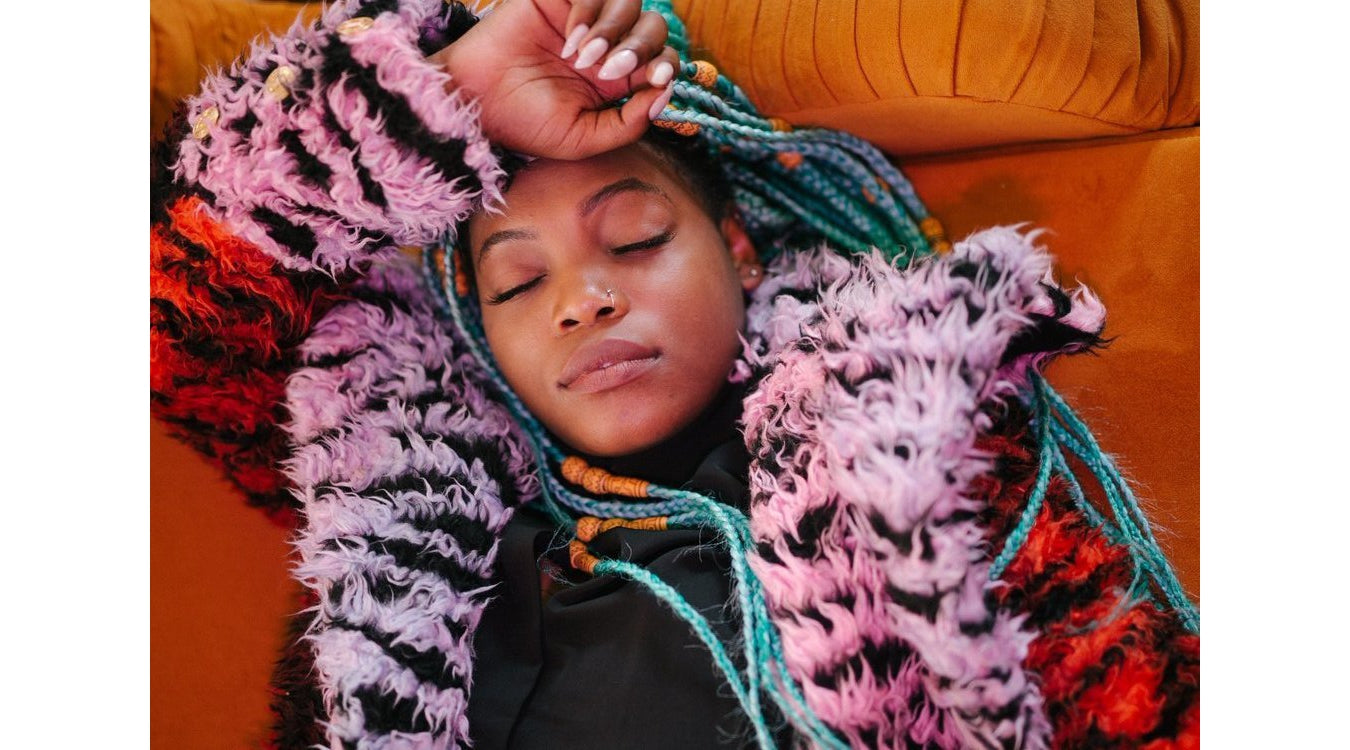
Seeking Stability? Connect with Your Root
To have strong roots is necessary for plants to thrive under any condition, this we know. The same goes for us – we require a secure foundation from which we can aspire, develop will, blossom, and come to better understand ourselves and our place in this vast mysterious world. This type of inner security amongst constant change is innately intertwined with the feeling of being grounded and with the basic right to be here.
Muladhara, literally meaning “root support” is the first chakra in the system of seven. It takes residency in the legs, feet, and bones of your body. It is all that is physical and governed by the element of Earth. It is concerned with the sense of feeling at home – both in the body of the earth and in the body that is your vessel.
Located in the perineum, and oriented towards self-preservation, Muladhara starts its initial development in utero onward until twelve months of life. The time spent within the womb is one of sanctity. Safety here encourages a sense of trust in the world, while trauma or neglect feeds the demon of the first chakra, which is fear.
Balance or disturbance during this period sets the stage for how we engage with ourselves and the world; the first months of life can define some of the deepest subconscious patterns that seem to govern aspects of our journey forward.
The initial bonding that takes place right after birth is the groundwork for a stable future, although we are not locked into any trauma that may have occurred at that time. If during the womb experience and first year of life one is nourished, there will be a deep sense of the right to have prosperity, good health, and being connected and comfortable in the body will persist. This comes with an ability to truly relax and be still. Becoming anxious and ungrounded doesn’t happen when you plant yourself deep into your own soul soil. Any unforeseen storms are contained, be it the rain of grief, or the sunshine of joy; when the first chakra is developed properly you will be a guardian to it all.
If, during infancy, there is anything that threatens ones survival, the first chakra will suffer from these wounds.
Birth itself is shocking for the little one who emerges from darkness, warmth, and water. It is in the womb where needs are met without question or request. The initial separation from mom is often greeted by bright lights and cold air; now one is in a place where language is foreign and this same tongue spoken appears to be the main form of communication.
It is natural to feel at least slightly traumatized by this experience, and that’s if all goes well. The caretakers sensitivity to this from their childs’ eyes can help ease and mitigate the disturbance. Alternately, if this experience for baby is not cared for consciously, providing a foundational sense of security, it can cause trauma that leads to an emotional imbalance of the first chakra. In addition to traumatic birth or poor bonding with the mother, abandonment and neglect, malnourishment, physical abuse or a violent environment contribute an out of balance Muladhara.
Root chakra imbalance can be observed on the physical level as disorders of the bowels, anus and large intestine, as eating disorders, and issues of the body tissues from the hips down. If the root chakra is out of balance, the body will be notably underweight and the emotions full of fear and angst. On the other hand, excessive appetite may become an attempt to be sturdy, weighted, and dense, often leading to over-eating, thus, obesity.
On an emotional level, one may live in fight or flight mode, always trying to survive. One may never truly feel in a resting place and may experience a disconnection from the body. Feeling settled will be difficult, and restlessness will often lurk close by. Boundaries will be difficult to keep as over adaptability to the wishes of others keeps one stifled to their own needs. It may be challenging to maintain finances or keep a steady income. There may be a sense of struggle moving throughout life in an assured way. To futilely try to find security, one may hoard and be greedy or be fixed on material possession as an extension and definition of self. Too much sluggishness and torpor keep one feeling heavy and lazy and often change is feared. The addiction to control is on the frontline and boundaries are rigid.
If you experience any or all of these symptoms of an out of balance root chakra, it’s time to spend some time loving, nurturing and reconnecting with your sacred Muladhara.
Connecting with the body is the primary healing practice to reclaim the root. To understand and offer nurturance to the physical is one of the many ways to regain balance, and there are various ways to do just that.
How to support your root chakra
Dance!!
Dancing is the number one way to way to re-set and re-connect with the muldahara. Healing your root is the ultimate excuse to shake it like the babe you are, so now is the time to make a playlist of your favorite tunes, close your bedroom door, and get down with yourself!
Start off with some slow, sensual music to warm up, feeling deeply into your hips, and allowing your movements to emerge from and be guided by your pelvis. Bend your knees, swivel your hips and feel your kundalini start to rise. Allow your arm movements to be born from your chest and heart as they circle through the air.
Next, transition from slow, sensual music to something that lights you up in every part of your being. Feel the beat and let your body go! Be loose and willing to move any part of your body any way it wants to move, regardless of what it looks like. Try dancing up high, in a mid-range, and down low to the ground. Twirl. Smile. Be free.
Finally, after at least 15 minutes, slow your music back down, and sit down in a seated position on the ground, with your back straight and your head held high to the sky. Place your hands on your thighs, palms down, and begin to ground in. Feel your root be nourished. Allow yourself to drop in and integrate the medicine of the dance.
Invigorate Your Yoga Practice
Knee to chest, bridge pose, locust, head to knee and tadasana are all beneficial yoga asanas. All of these and other postures that support root stability have a few things in common: they activate the hips and legs and stimulate apana, the downward flow of energy in the body. If yoga isn't your thing, just know that physical activity, be it dance, swimming, playing ball or hiking, is supportive to re-setting premature roots so they can again grow strong.
Get a Massage
Massage can be incredibly nourishing for those who feel disconnected from their body. Find a therapist that you feel safe with and that is responsive to your needs. And get involved with the art of expressing your needs! If it is too much of a stretch in finances or comfort, trade massages with a friend. Alternatively, massage your own feet with sesame oil and set the intention to ground yourself. Touch that feels safe is deeply affirming to the physical self.
Draw Your Body
This is an exercise of exploration, there is no right or wrong way to do it. Take a pencil and a sheet of paper and draw how you feel in your body. Allow yourself to do this in any way that makes sense, it does not have to be realistic. Afterwards look to interpret your drawing. Perhaps you took up little of the paper which could be indicative that you don’t look to take up much space in your environment. Perhaps your proportions are skewed from reality, drawing yourself quite large when you are indeed small framed, or otherwise. If you feel comfortable, have a friend take a look at your drawing and help you to process, but first and foremost use your intuition.
Get in Touch with Your Feet
Focusing on the feet is a wonderful way to ground. You can stamp, jump up and down, use a footsie roller or a tennis ball, or kick. These are all some ways to activate the feet. Walking meditations are grounding, and simply placing the attention on the feet is fosters a feeling of roots.
Engage in Body Dialogue
Do this exercise with a friend. Lie down on your back in a comfortable position; have your friend by your side with a piece of paper and a pen. They will help to guide your through the exercise. The friend names a part of your body and you finish the sentence with an emotional experience. For example, the friend will say and have you repeat, “I am my head and I…” and you then say “I am my head and I feel foggy”. Or, “I am my heart …” and you say, “I am my heart and I feel resistant”. When the body has all been included and had a chance to speak the friend will read back to you only the emotional responses. I feel foggy, I feel resistant, like that. Then, as necessary, you can dive deeper into certain feelings.
Yoni Steam Regularly
Yoni steaming is a powerful ancient remedy that has been used for centuries by women worldwide to clear, nourish and connect with the female reproductive system, which lies in the root. This gentle herbal treatment provides effective support for the first chakra, and invites you to reconnect with the powerful, creative energy that lies in your womb. Learn more about yoni steaming, and begin this powerful practice, and use a yoni steam guided meditation to connect with your root.
Rediscover your right to be here.
Give to yourself the love that you have been endlessly seeking.
Learn More!
Check out these key resources about the chakras.
Julie MacAdam is a creative artist, yoga teacher, body worker, and lover of the earth. She is founder of Medicinal Changes, through which she offers herbal medicine and consultations as well as bodymind practices.



Leave a comment
This site is protected by hCaptcha and the hCaptcha Privacy Policy and Terms of Service apply.